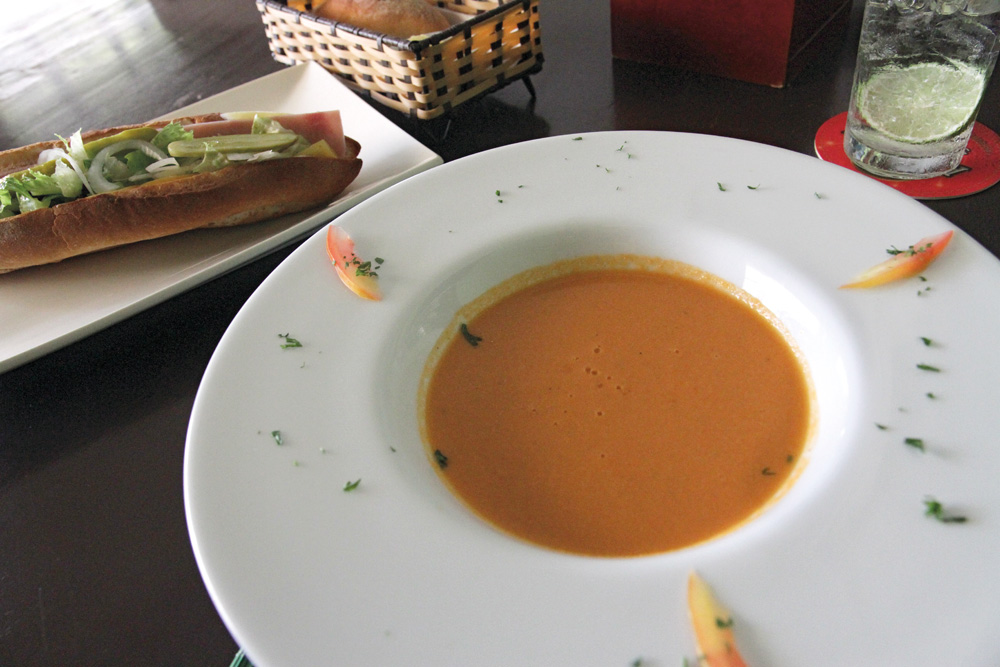Hot season is upon us. Instead of sweating into your bobor, try cooling down with a bowl of chilled gazpacho, a tasty Spanish delicacy fit for an emperor (or, in this case, empress)
As the author of the book World Food: Spain (Lonely Planet), I’m always on the lookout for things Iberian. And while there are a surprising number of Spaniards here in El Phnom, the Spanish connection is much older than you might think. Spaniards and their Portuguese cousins were the first Europeans to set foot in this town. Missionaries like Gaspar de la Cruz (1556) and soldiers of fortune like Blas Ruiz de Hernán González (1592) established a string of outposts along the Tonle Sap from here to Lovek, the interim capital at the time. De la Cruz is said to have harvested a few souls, then went on his way. Gonzalez meddled in Cambodian politics and came to a bad end. But they (or their fellows) left something behind of lasting value: the tomato.
Tomatoes, and many other common fruits and vegetables, are indigenous to the Americas. They were unknown to Europe or Asia before Columbus (1492). From Mexico and Peru the Spanish went seeking further fields of conquest, their ships laden with the abundance of the New World. They came here to PP. Now, there is no historic document that says, “On this day, a bunch of Spanish dudes arrived bearing tomatoes, and they were good.” But we know that the seeds were in Spanish ships out of the Americas bound for the Orient. And we know that they spread them widely. Even to here. So there is a special Spanish connection when we enter a local house of degustation and order gazpacho.
Gazpacho, often defined simply as cold tomato soup, is so much more. It’s not easy to pin down and define with exactitude, but there are common threads: fresh tomatoes, Spanish olive oil, wine vinegar, garlic and bread incorporated into the dish or served alongside. It originated, as did so many European dishes, as peasant fare. And peasant fare often percolates its way up through the social strata, expanding and evolving in its usages. Its elevation from the Andalucian table to points beyond is credited to Eugenie de Montijo, the Spanish wife of the French Emperor Napoleon III in the 19th Century.
Where to find it? There is a well-known place in BKK1 serving a cup of tasteless red liquid called gazpacho. A lovely little garden café off Norodom offers a pink, sugary pudding desecrating the name gazpacho. And there is a fancy-schmancy joint near Monivong that serves a green glop with the sacred name. But the best gazpacho I’ve tasted here is at the French-owned Cyclo Hotel. It’s light, tangy and refreshing, seasoned to perfection and bearing a whiff of garlic in due proportion. Taken on the shady corner terrace on a sultry afternoon, it’s a tonic for tropical heat. Before dinner it’s a fine aperitif, stimulating the gastric juices in preparation for the great gastronomic labour ahead. Be sure to whisper thanks to the Empress Eugenia for the fine French connection.
Cyclo Hotel, #50Eo, Street 172. 023 992 128
